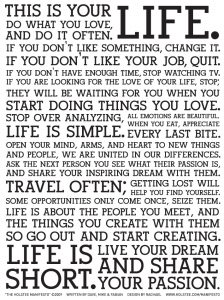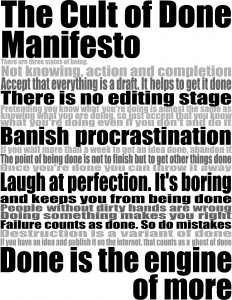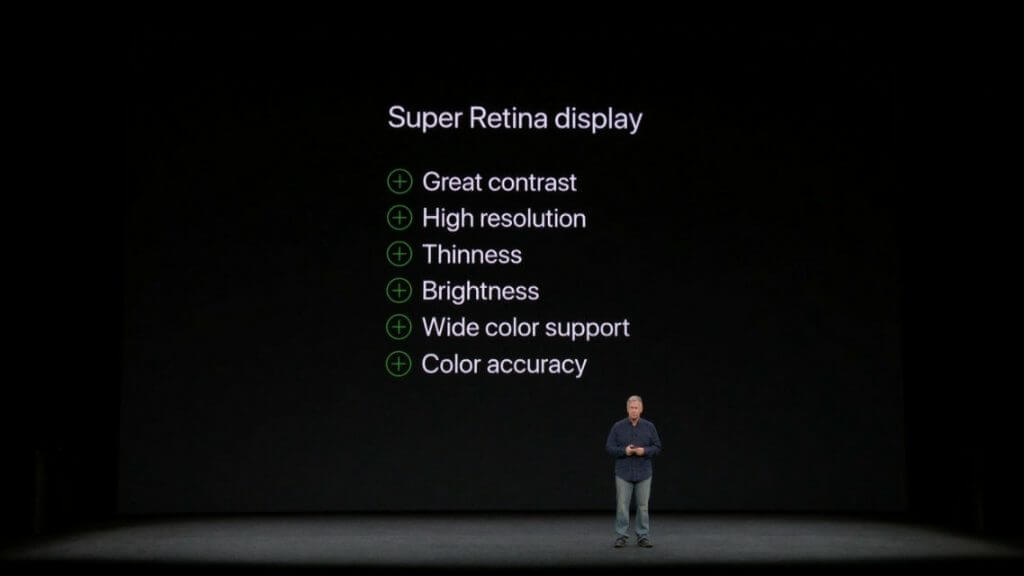This is an obituary. I hope it is not only too early, but also wrong. However, I fear it is only too soon. So, in short, Apple, that's it.
I am an Apple disciple from the very beginning, have never used other computers and steadfastly refuse to this day. Even if my resistance is weakening. My decreasing resistance has many technical reasons and, at some point, has to do with the fact that I am only prepared to pay the same amount - or significantly more - for inferior products than for better products from the competition if these parts are cool. Products are cool when they have meaning. Apple used to have meaning. Gone are the days.
Us against them.
Some of us will remember what we suffered as Mac users in terms of compatibility and service. Back in the 80s, when IBM, HP, Microsoft & Co. were fighting it out among themselves. We were not only exotic, we were idiots in the eyes of the others. And we were proud of it.
The legendary commercial in 1984 for the introduction of the Macintosh got to the heart of the matter: We were the good guys.

By loading the video, you agree to YouTube's privacy policy.
Learn more
That's all that needs to be said. Here we are, the Macintosh users. A small group of righteous people fighting for liberation from the bondage of the all-dominating Big Brother IBM. The rebellious good guys are rebelling against the ruling power of the elite.
"Us against the others! We, the good and pure against the evil elites!" - A group becomes particularly strong when it has a common enemy. Preferably one that you can confront with your own moral superiority. You can be for something, but also against something at the same time. And already one of the most powerful story engines is humming, because it is driven by emotion - and unfortunately therefore also masterfully used by demagogues around the globe.
The fact that the 1984 commercial was produced by the Almost Still Garage Company for a fortune, directed by the hottest Hollywood director of the time, Ridley Scott, and placed at the Super Bowl for the usual kinky price was anything but a given. But it was, of course, awesome. This is brand experience. This is rock'n'roll, baby, and it's live - even if you're not there!
The stuff was expensive as hell and hard to get in our part of the world. The names of service technicians who at least knew their way around were passed on among us Apple victims like Anna Bolika's phone number among bodybuilders.
Everything will be fine.
Then they pushed Steve Jobs out in Cupertino, but we stayed loyal. We remained faithful, even if the Macs and their software sometimes worked so badly that not even our copywriter's imagination was enough for the right term. We wrote a lot by hand.
I still have a vivid memory of how a co-worker used massive physical force to stop me from throwing my Powerbook out of the window of my Vienna office onto the autumnal Reisnerstrasse. Also kind of rock'n'roll.
Apple communicationat that time consisted mainly of particularly well-written advertisements about products and their features. All in all, something for real individualists who were smarter than the others, more creative, more independent. We loved the ads, we loved our Macs, and at some point they loved us back. Because one day Steve Jobs was back at the wheel and everything became good.
Finally, Macs were cool again. But how!
Allow me: We are the crazy ones!
In June 1998, I was invited to Cannes Lions as a juror. At that time, you couldn't get much closer to the most interesting advertising campaigns in the world, because Google only went online a few months later. That's why I was all the more excited about Apple's freshly discovered "Think different"campaign.
This was another awakening experience for me on the subject of brand stories. You see an image, a logo and a claim and stand in the middle of a new world that creates itself in your head and above all in your heart.
And the film to go with it! The manifesto of a generation of young people of all ages who had one thing in common: they were crazy enough to believe they could change the world and consequently would be the very ones to do it. That was us! The Crazy Ones: John & Yoko, Buckminster Fuller, the Callas, Jim Henson, Amelia Earhart ... and Muhammad Ali anyway.

By loading the video, you agree to YouTube's privacy policy.
Learn more
When you work on your brand story, make sure you model this principle. It doesn't matter if you are a solopreneur or a mega-brand, if you communicate B2B or B2C. Even if you never bring it to the public with films, ads or other broad measures, but perhaps only use it internally.
- Find a strong motto, your mission statement - Think different. This motto, the battle cry, guides your actions and can then become the claim for your brand, but it doesn't necessarily have to be. In any case, the motto must be T-shirt-able, i.e. it must proclaim a team spirit that everyone is proud to wear on their chest.
- Define your opponents, the so-called antagonistic forces. Common opponents form and strengthen the spirit. This can be the competition, of course, but also virtual opponents such as fear, blandness or poor quality. In the Think Different campaign, it is the narrow-minded, uninspired conformists.
- Who are you, who are you, the conspiratorial group? - We are the Crazy Ones who change the world ...
- Write a manifesto, your brand's message to the world. This is the text from the TV commercial.
Create posters, edit videos with it, make a lockscreen for your smartphone - or just write it down in your notebook, but write it down, and not with your PC! Heart - brain - heart - hand - pen - paper. These are substantially important and enormously effective, magical tools.


What is left of this extraordinary Apple brand story? Less than nothing. The presentation of the iPhone 8 and the X was a revelation of the decline of a charismatic company.
I won't talk about the new features here, some of which I admit I think are cool, but that's about it. The claim that the iPhone X will change the world in the next ten years as the iPhone itself has done in the past ten years is a bit thick, even for the American euphoria scale, which starts with awesome.
Steve! Where are you?!?
But what was much worse was the presentation itself. People with the charisma of a blown motherboard present technical features with an enthusiasm as if they had experienced a death in their immediate family. Which is true in principle, because Steve Jobs is gone, definitely. But he won't be back this time, there's no way around it. And I say that as someone who has taken the precaution of leaving a little space free in his record collection after the Elvis Presley LPs.

Do you still remember Steve Jobs' legendary presentations? While the nerds at Microsoft were presenting themselves with an erection by listing download rates, megahertz and processor performance and putting their audience into a waking coma, Steve Jobs pulled the first iPod out of his pocket: "1,000 Songs in Your Pocket ..." That is storytelling.
Or the presentation of the first iPhone. Passion, dramaturgy and every technical feature nourished with a great Why and carried by the good spirit Think different.

By loading the video, you agree to YouTube's privacy policy.
Learn more
Is there no one among the 12,000 people at the Apple Campus who can put together and deliver a tolerable presentation? Is there no one there who is finally concerned with the brand again instead of constantly making irrelevant product advertisements? Can't Siri come up with anything either?
The times when Apple really led the way with products are obviously over. The significance of the brand and the relationship with its customers - in this case: with its disciples - are disappearing. After all, in recent years they were only felt through Steve Jobs during his lifetime anyway. Even if the economic success of the company is still gigantic, brand-wise the wallpaper is burning!
Products + logo + brand assets + advertising is not a brand by a long shot, even if most people call it a brand. Only when a strong brand story is added is everything there that is necessary.
Think different could still work perfectly as a brand story and in theme and content marketing make Apple the chief ideologues of generations Y, Z, Why & Global, that the rags fly around the ears of the others. One of this generation is Casey Neistat.
The rest of us.
Casey is one of those guys who make YouTube what it will soon be for good, namely one of the most important media of our time. Neistat produces a vlog about himself and everything else that moves him and what life brings to the shores of a 35-year-old creative person. This not only interests him, but apparently also a lot of other people, because he has almost eight million subscribers on YouTube, and his videos can reach 44 million views if need be. And so, thanks to his creativity and reach, he earns a lot of money as an influencer, including from Samsung. The company commissioned him to produce a commercial for the broadcast of the 2017 Oscars®, demonstrating exactly how a brand can speak from the heart of its audience and so precisely root itself in the heart of the community. Wow!

By loading the video, you agree to YouTube's privacy policy.
Learn more
Casey speaks for "The Rest of Us", the generation that does not always produce an avalanche of content in an entirely comprehensible or even insanely meaningful way, and often creates great things in the process. The web is full to bursting with these large and small works of creative people.
Casey Neistat very cleverly and unspokenly addresses this group in the story as the good group of the noble, morally superior, because they don't need indecently huge Hollywood budgets and super-professional equipment, but only a mobile phone, tape and a lustful creative urge so that steep content is born. Us many little good guys, against the others, the elitists. Does this story sound familiar? No wonder, it's the story model that Apple used in 1984.
These are very strong values that are triggered in the audience, this is story sharing at its best. Especially when Casey says at the end: "If we hear you can't do it, we have a suitable answer: Well, watch me ...". - So the updated version of "The people who are crazy enough to think they can change the world are the ones who do." We, the creative people - that also has something to do with the subconscious archaic feeling of our own divine power. - Yes, in the end we, the good guys, win!
Do what you can't.
And then it's time for the real thing: "Do what you can't." Samsung and the users together show everyone else. Against all odds! - This is the perfectly constructed heroic story: Normal person (user) faces seemingly insurmountable obstacles (the power of others) on the way to fulfilment (making awesome video content), but above all his inner obstacles (self-doubt), is motivated by the mentor(Samsung), pulls the sword Excalibur(Samsung Galaxy) from the stone in defiance of all doubters and stands there as a radiant hero.
And so a heroic story emerges that immediately captures those who don't necessarily fill YouTube, Instagram and Snapchat with masterpieces, but simply want to belong to this special group of the chosen ones. - That's exactly how it works!
It is a pity that there is practically nothing in the backend, for example on the website, to support the brand story beyond advertising. There is still enormous potential that is completely unused, and only this would actually be able to expand the story into an effective brand story, because it can be experienced, and even turn it into a movement. Because then the most intensive brand experience would emerge. Then what happens is what you have to do today. Nothing does that better than professionally developed and perfectly implemented content marketing.
When a brand story is inspired by values that touch a longing in the audience, then a storyworld is created in which brand and audience meet and interact. There you gain precious time with the brand and then a really strong bond is woven.
For all those who say: "You can't do that with my brand!" I have a fitting answer: "Do what you can't" before your competitor says: "Watch me ..." - Or, as my grandmother, old Story Dudette, would say, "One more thing, dear children: "No Story. No Glory."
